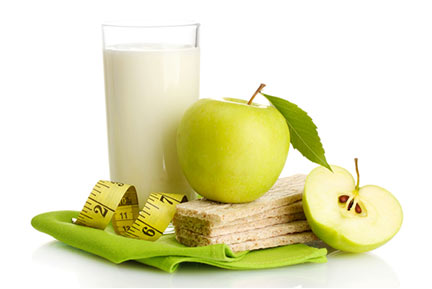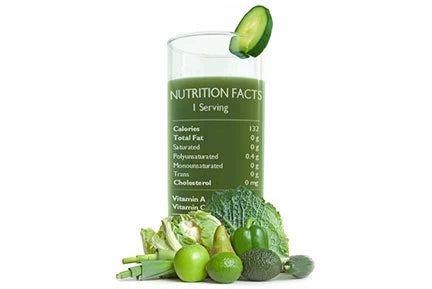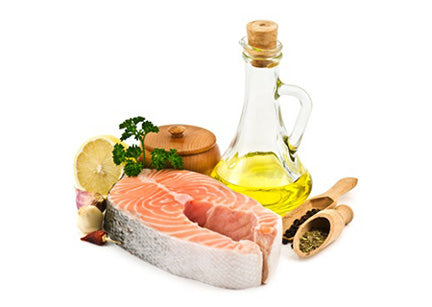What are the benefits of High Dose Vitamin C?
 Is Food Nutritional Value Declining Over Time?
Is Food Nutritional Value Declining Over Time?
Several fruit, vegetables and grains studies have indicated that dietary value has declined over time, although the reasons for this may not be as easy as soil degradation. There is substantial proof that such issues may be associated with modifications in cultivated varieties, with some high-yielding crops being less nutritious than historical varieties. There are several other problems concerned, such as modifications in farming techniques, including the comprehensive use of chemical fertilizers, and the handling and preparation of food.
In a 2004 research1, 43 garden plants from 1950 to 1999 were assessed by the U.S. Ministry of Agriculture. For six nutrients – protein, calcium, potassium, iron, and vitamins B2 and vitamin C — the authors discovered statistically significant decreases and for food high in vitamin C was as a result poor. The researchers suggested that “downward pressure on the acquisition or synthesis of many nutrients, caused by decades of selecting cultivars for other resource-limited traits such as yield, growth rate and pest resistance. Selection for yield especially, may enhance the carbohydrate-water fraction in vegetables, without fully proportionate increases in other nutrients”.
Returning to the same subject in 2009, the lead researcher of the aforementioned review reaffirmed his previous findings after conducting an updated review2. He noted that, since higher yields are the main goal of modern agriculture, the main side-effect is a nutrient “dilution effect”. This happens because crops such as fruits, vegetables and grains are very high in carbohydrates, ranging from 70% to 90% in dry weight. Therefore, when higher yields are selected for, this increase in weight doesn’t translate in a proportional increase in other nutrients and phytochemicals.
On the other hand, a more recent review3 somewhat questions the uniformity of earlier findings, nevertheless it acknowledges both the phenomenon of nutrient dilution due to the emphasis given to higher yields, as well as the historical decline in nutrient density.
However, there are other factors that may influence the nutrient content of modern produce. The most common of them is the impaired ripening process. Due to the high demand, most produce is picked when it is still green, thereby breaking the natural ripening process. In many cases this leads to severe decline in certain nutrients. For example, cherries, which are naturally high in vitamin C, lose half of their expected vitamin C concentration when they are picked before their time -something that happens as a rule and not as an exception4.
Vitamin C: A Health Powerhouse
Vitamin C, also known as ascorbic acid, is perhaps the most famous of all vitamins. Partly because it has been well-known and extensively researched for nearly 100 years, beginning with the discovery that scurvy can be prevented and cured, it is now commonly thought that we already understand everything about it. However, this is not entirely true.
Vitamin C is a water-soluble vitamin that the body cannot store. A certain amount of it needs to be ingested on a daily basis to meet the body's needs.
Numerous roles have been recognized for this vital nutrient. Vitamin C is a strong antioxidant shown to safeguard tissues from free radicals in multiple organic structures. Free radicals, also known as reactive oxygen species (ROS), are highly active molecules formed by oxidative stress, causing disastrous harm to cellular structures and to the DNA itself5. Vitamin C has also been shown to increase the activity of the immune system, as it has been discovered to accumulate in leucocytes and may even benefit cardiovascular health; studies have shown that vitamin C supplementation may facilitate useful modifications in the blood lipid profiles of consumers, decrease the "bad" LDL cholesterol and serum triglycerides, and increase the "good" HDL cholesterol profile6.
 Vitamin C Works in Disease as well
Vitamin C Works in Disease as well
Apart from healthy individuals, vitamin C can equally benefit people with all kinds of health conditions, ranging from acute viral infections such as the flu, to chronic diseases such as diabetes and even cancer.
Influenza, also known as “the flu”, is a potentially serious acute illness, caused by the influenza virus. There are several types of influenza viruses, broadly categorized in three genres: A, B and C. Of the three, the serotypes that are more often seen in humans – and also cause the most serious incidents— belong to the A family (e.g., the H1N1 and the H1N5 viruses).
Flu symptoms resemble those of the common cold, but are typically more severe and last longer. Symptoms of flu include persistent cough, sore throat, headaches, fever, painful joints and muscles, stuffy and/or runny nose. Unlike the common cold, however, the flu can result in serious complications, especially in very young children or elderly individuals, those who have severe underlying illness (e.g., cardiovascular disease, COPD or diabetes) and those with a weakened immune system. These complications can be moderate, such as secondary infections of the ears and sinuses, but can also become very serious, in the form of lower respiratory tract infections, bronchitis and pneumonia. It’s no wonder that each year several people die from the complications of the flu even in the most medically advanced countries.
In a 1999 clinical trial7, Gorton and Jarvis showed that mega doses of vitamin C could stop the onset of diseases caused by respiratory virus disease. The review by Sgarbanti et al., who outlined more research that discovered a positive association, further endorsed this8. Indeed, a recent Cochrane review, which is regarded the golden standard of clinical proof, has shown that vitamin C administration can shorten the length and severity of both the common cold and the flu9. Finally, Cai et al.'s latest article offers a fresh mechanism of action through which vitamin C could safeguard cells against infection10.
When it comes to cancer, the role of antioxidant compounds has been researched for a long time, both for main therapy and for the control of the side effects caused by radiotherapy and chemotherapy11. Vitamin C, mainly the intravenously administered form, has always been the most prominent antioxidant to this end. Intravenous vitamin C has been found to play various roles in cancer treatment, from reducing the side effects of chemotherapy to enhancing its effect12. Similarly, when intravenous vitamin C is administered at the same time with radiotherapy, it may enhance its efficacy in certain cancers13,14.
Considering its pivotal role as outlined above, one can understand how crucial it is to include many varieties of foods with high dose in vitamin C in the human diet.
Food high in vitamin C : Which one contain the Highest Amounts of Vitamin C and why there is a benefits of high dose Vitamin C?
A person who follows a reasonably balanced diet is probably safe against severe deficiency. Almost all fresh fruits and vegetables contain vitamin C in varying quantities. The following table, adapted from Vitamin C: Fact Sheet For Health Professionals, summarizes a selection of food sources with their respective benefits in high dose vitamin C concentrations:
|
Food |
Milligrams (mg) per serving |
Percent (%) DV* |
|
Red pepper, sweet, raw, ½ cup |
95 |
158 |
|
Orange juice, ¾ cup |
93 |
155 |
|
Orange, 1 medium |
70 |
117 |
|
Grapefruit juice, ¾ cup |
70 |
117 |
|
Kiwifruit, 1 medium |
64 |
107 |
|
Green pepper, sweet, raw, ½ cup |
60 |
100 |
|
Broccoli, cooked, ½ cup |
51 |
85 |
|
Strawberries, fresh, sliced, ½ cup |
49 |
82 |
|
Brussels sprouts, cooked, ½ cup |
48 |
80 |
|
Grapefruit, ½ medium |
39 |
65 |
|
Broccoli, raw, ½ cup |
39 |
65 |
|
Tomato juice, ¾ cup |
33 |
55 |
|
Cantaloupe, ½ cup |
29 |
48 |
|
Cabbage, cooked, ½ cup |
28 |
47 |
|
Cauliflower, raw, ½ cup |
26 |
43 |
|
Potato, baked, 1 medium |
17 |
28 |
|
Tomato, raw, 1 medium |
17 |
28 |
|
Spinach, cooked, ½ cup |
9 |
15 |
|
Green peas, frozen, cooked, ½ cup |
8 |
13 |
*DV = Daily Value. The U.S. Food and Drug Administration (FDA) developed DVs to help consumers compare the nutrient contents of products within the context of a total diet. The DV for vitamin C used for the values in the above Table is 60 mg for adults and children age 4 years and older. This DV, however, is changing to 90 mg as the updated Nutrition and Supplement Facts labels are implemented. The updated labels and DVs must appear on food products and dietary supplements beginning in January 2020, but they can be used now. FDA requires current food labels to list vitamin C content, but this requirement will be dropped with the updated labels. Foods providing 20% or more of the DV are considered to be high sources of a nutrient, but foods providing lower percentages of the DV also contribute to a healthful diet.
The Daily Value is a decent measure for the minimum required quantity of Vitamin C, but it doesn’t say much about the true amount needed in order to reap the maximum possible health benefit. Moreover, as the famous Padayatty et al. research showed5, by simply increasing the ingested quantity, when conventional oral forms of supplemental vitamin C are used, one achieves only minimal changes to true plasma concentrations of ascorbic acid: whether the person takes 1 gram or 3 grams of vitamin C, the result is the same after 25 hours.
So, there are already two problems apparent when it comes to Vitamin C availability in the body. First, even for food high in vitamin C probably contain less than what they did in the past, mainly due to contemporary picking methods and high-yield cultivation processes. Second, even when additional vitamin C is administered through conventional supplementation, the true result is a minimal change in plasma concentration due to ascorbate’s pharmacokinetic properties and tight regulation within the body.
The first problem can be overcome by focusing on foods that are highest in vitamin C and increase their daily consumption. As for the second problem, research has provided two options: intravenous administration of vitamin C and liposomal encapsulation. However, since intravenous administration is not a viable option for the average person, as it is expensive and it requires specialized facilities and medical monitoring, the focus is gradually shifted towards liposomal encapsulation as the only efficient way of quickly increasing plasma vitamin C levels.
Vitamin C under Liposomal Encapsulation, the great path for benefits of high dose vitamin C:
Liposomes are microscopic bubbles made of phospholipids, the same molecules that make up a cell's outer membrane's primary structural components. Phospholipids are mainly characterized by having a hydrophilic head and hydrophobic tail. This allows them to align with the heads facing outwards in dual layers, facilitating the transfer of several distinct types of molecules. Indeed, while liposomal encapsulation is currently at the frontier of pharmaceutical research, it is not a fresh concept. In fact, liposomes are discovered in nature and their function is to improve effective transmission across membranes of big and complicated molecules. Perhaps the best instance of such transfer is human breast milk: since breast milk is mainly regarded to be something beyond a basic means of nutrition (for instance, it has been discovered to contain both passive and active immunity elements, in addition to any single nutrient), it becomes apparent that liposomes play a major role in this evolutionary success tale.
As a drug delivery method, liposomal encapsulation is a technique of high-tech, high-precision formulation that needs rigorous processes and quality control to be effective. There are several techniques, some better than others, of liposomal encapsulation. One thing is certain: Producing high-quality liposomal delivery systems is not an easy process. To ensure optimal efficacy, only premium quality raw materials should be used; liposomes should be sized according to certain standards; and all claims should be validated by independent testing.
Goldman Laboratories are experts in the field of high-quality liposomal encapsulation, which is why they reject the use of all methods that yield questionable results. This includes sonication, chemical procedures, high pressure, or the use of hydrogenase phospholipids.
This is why Goldman laboratories ensure the creation of premium quality liposomal vitamin C, by meeting and/or exceeding the highest available quality standards. Goldman laboratories use only top-quality raw materials and ensure that all liposomes generated are of appropriate sizes. This is the only way to reap all the benefits of true liposomal technology, such as:
• Natural insulation of vitamin C from the environment, which prevents it from being oxidized prematurely
• Superior gastrointestinal absorption compared to conventional vitamin C forms, whereas at the same time ensuring minimal unabsorbed material in the gut. This minimizes undesired gastrointestinal effects like bloating and pain.
• No artificial coloring or preservatives added.
• High cellular uptake that leads to increased plasma levels compared to conventional vitamin C forms.
In conclusion, liposomes are a way to combine oral administration comfort with the efficacy of vitamin C intravenously injected. The liposomal capsule shows high affinity to the membranes of the gastric cells, enabling the encapsulated vitamin C to be absorbed virtually completely in the intestine. In addition, this technique of administration bypasses the rigid plasma regulation of vitamin C, leading in much greater concentrations that match or even exceed those reached with the injectable type. Finally, thanks to the distinctive pharmacokinetic features of the liposomal delivery system, which allows extended vitamin existence in circulation, steady tissue saturation with the benefits high dose vitamin C can be achieved with only 3 daily doses. On the contrary, traditional oral forms reach only temporary saturation and rapidly excrete the surplus vitamin in the urine, effectively wasting money and increasing the risk for unpleasant side effects.
References:
[1] : Davis D, Epp M, Riordan H. Changes in USDA Food Composition Data for 43 Garden Crops, 1950 to 1999. Journal of the American College of Nutrition. 2004;23(6):669-682.
[2] : Davis D. Declining Fruit and Vegetable Nutrient Composition: What Is the Evidence? HortScience. 2009;44(1):15-19.
[3] : Marles R. Mineral nutrient composition of vegetables, fruits and grains: The context of reports of apparent historical declines. Journal of Food Composition and Analysis. 2017;56:93-103.
[4] : Serrano M, Guillén F, Martínez-Romero D, Castillo S, Valero D. Chemical Constituents and Antioxidant Activity of Sweet Cherry at Different Ripening Stages. Journal of Agricultural and Food Chemistry. 2005;53(7):2741-2745.
[5] : Padayatty S, Katz A, Wang Y, Eck P, Kwon O, Lee J et al. Vitamin C as an Antioxidant: Evaluation of Its Role in Disease Prevention. Journal of the American College of Nutrition. 2003;22(1):18-35.
[6] : McRae M. Vitamin C supplementation lowers serum low-density lipoprotein cholesterol and triglycerides: a meta-analysis of 13 randomized controlled trials. Journal of Chiropractic Medicine. 2008;7(2):48-58
[7] : Gorton H, Jarvis K. The effectiveness of vitamin C in preventing and relieving the symptoms of virus-induced respiratory infections. Journal of Manipulative and Physiological Therapeutics. 1999;22(8):530-533
[8] : Sgarbanti R, Amatore D, Celestino I, Marcocci M, Fraternale A, Ciriolo M et al. Intracellular Redox State as Target for Anti-Influenza Therapy: Are Antioxidants Always Effective?. CTMC. 2014;14(22):2529-2541
[9] : Hemilä H, Chalker E. Vitamin C for preventing and treating the common cold. Cochrane Database of Systematic Reviews. 2013
[10] : Cai Y, Li Y, Tang L, Tsoi B, Chen M, Chen H et al. A New Mechanism of Vitamin C Effects on A/FM/1/47(H1N1) Virus-Induced Pneumonia in Restraint-Stressed Mice. BioMed Research International. 2015;2015:1-12.
[11] : Fuchs-Tarlovsky V. Role of antioxidants in cancer therapy. Nutrition. 2013;29(1):15-21
[12] : Ma Y, Chapman J, Levine M, Polireddy K, Drisko J, Chen Q. High-Dose Parenteral Ascorbate Enhanced Chemosensitivity of Ovarian Cancer and Reduced Toxicity of Chemotherapy. Science Translational Medicine. 2014;6(222):222ra18-222ra18
[13] : Herst P, Broadley K, Harper J, McConnell M. Pharmacological concentrations of ascorbate radiosensitize glioblastoma multiforme primary cells by increasing oxidative DNA damage and inhibiting G2/M arrest. Free Radical Biology and Medicine. 2012;52(8):1486-1493.
[14] : Choi JKim J. High Dose Intravenous Vitamin C during Radiotherapy Impact on Breast Cancer Recurrence. Korean Journal of Family Practice [Internet]. 2014 [cited 7 June 2019];4(4):328-334. Available from: http://www.kjfp.or.kr/journal/view.html?uid=148&vmd=Full






